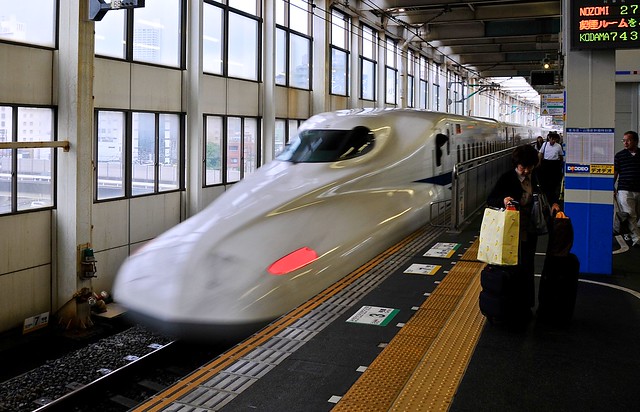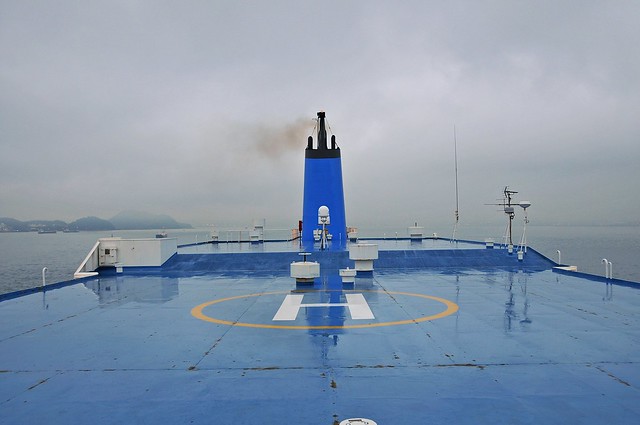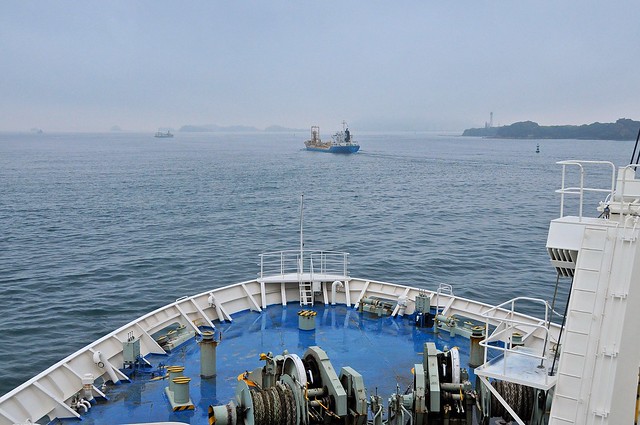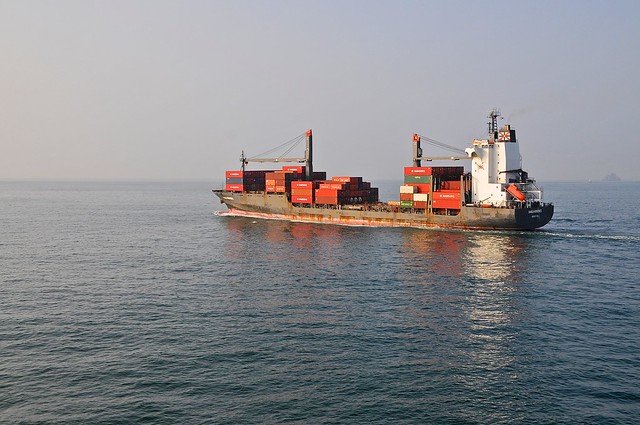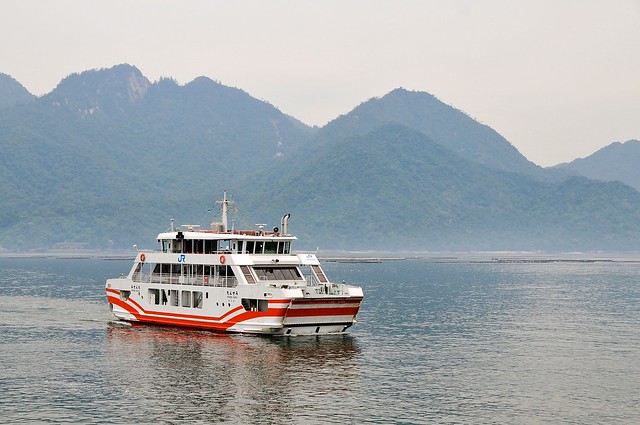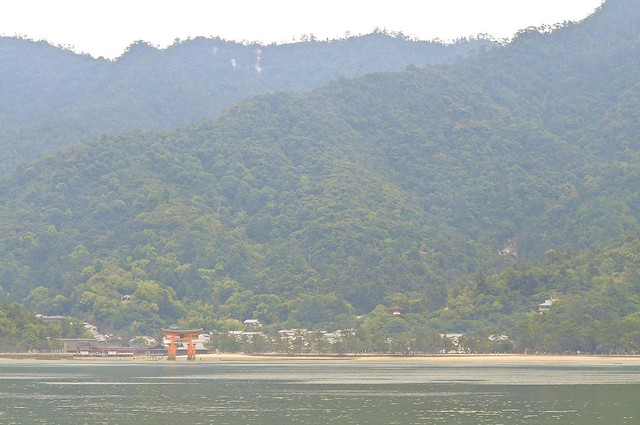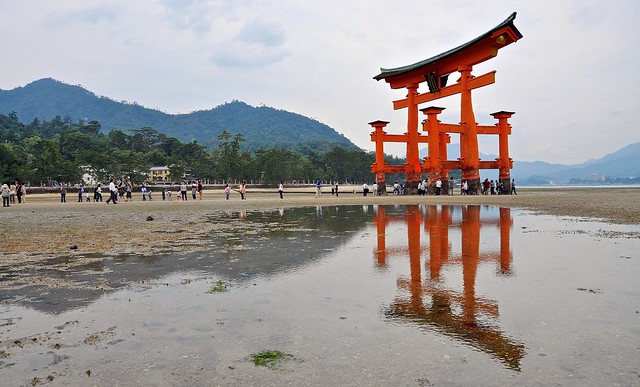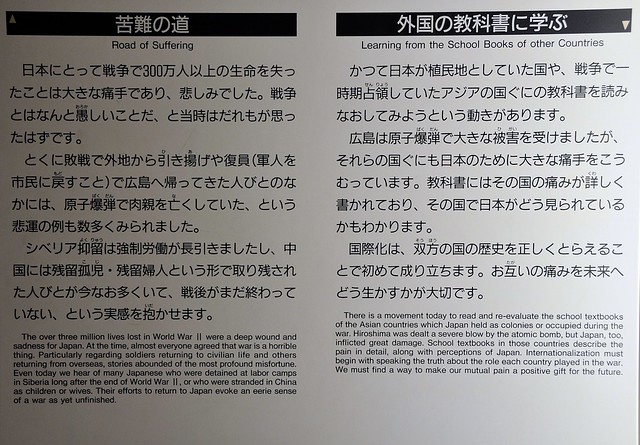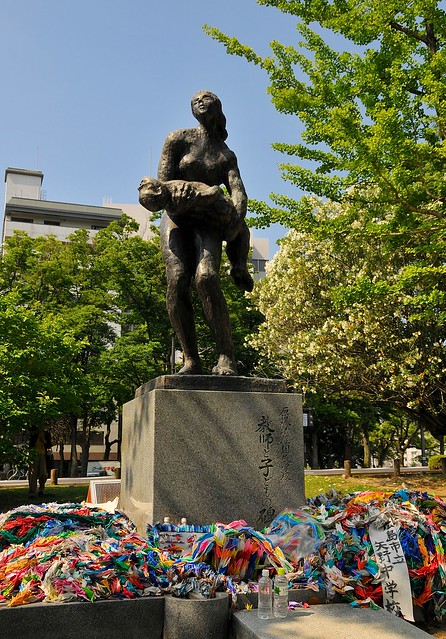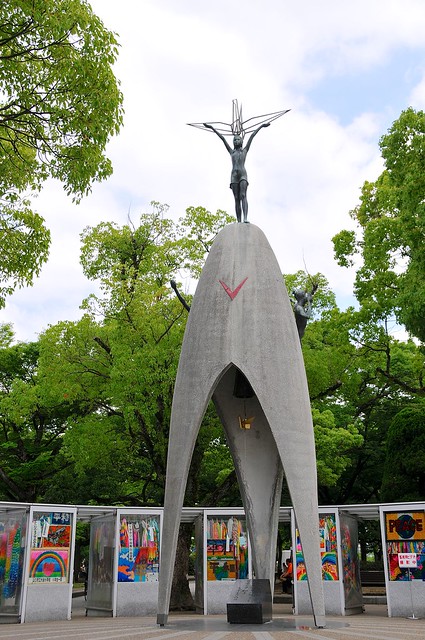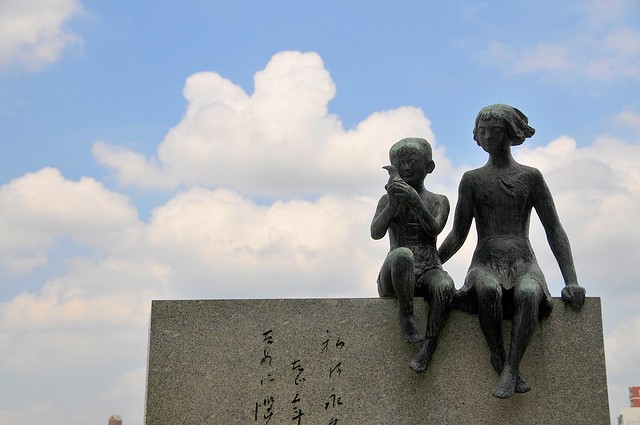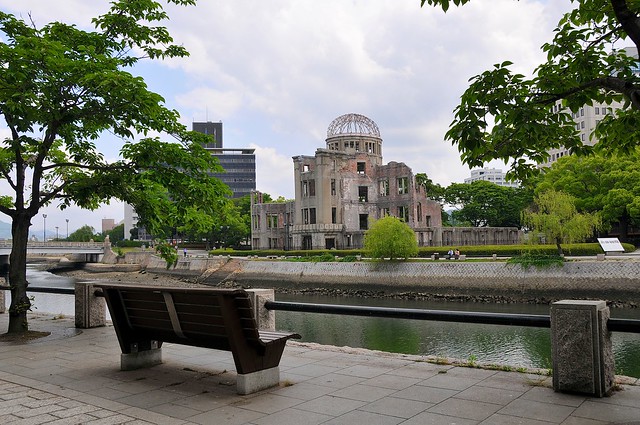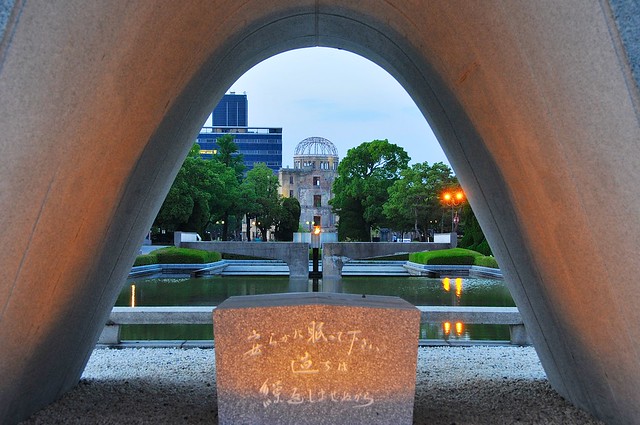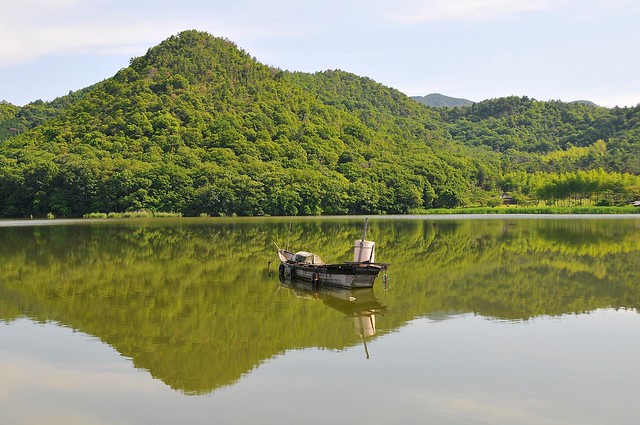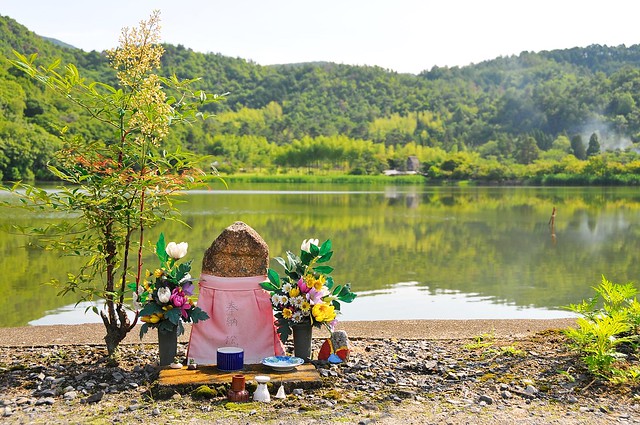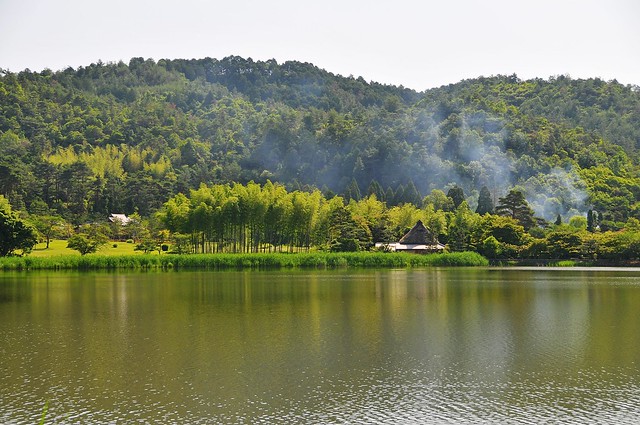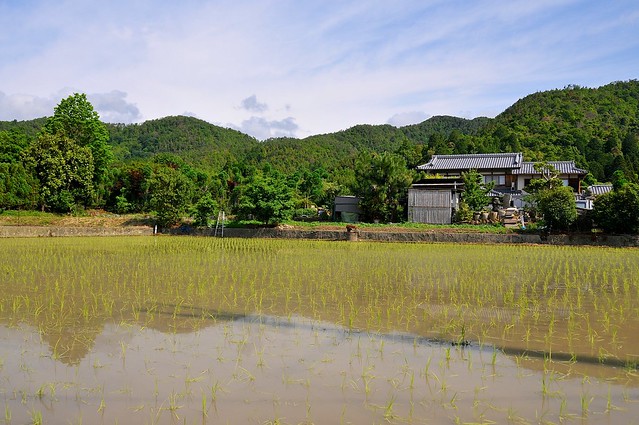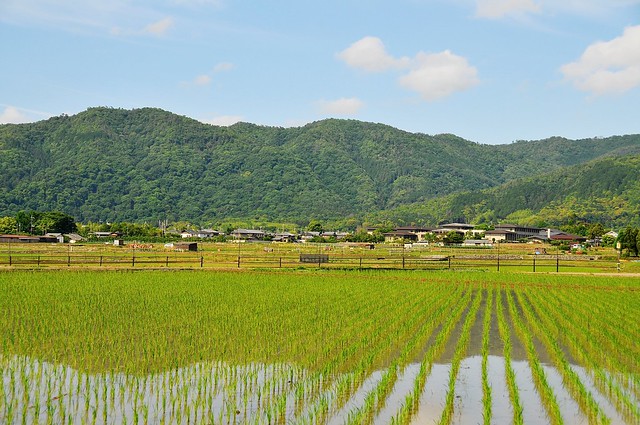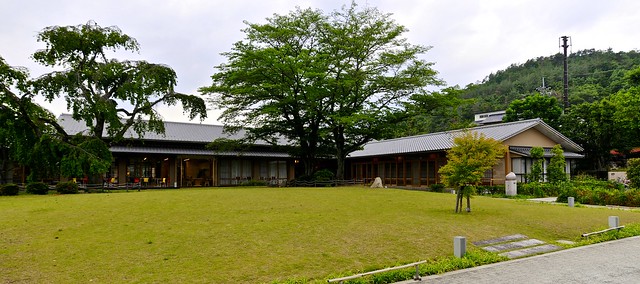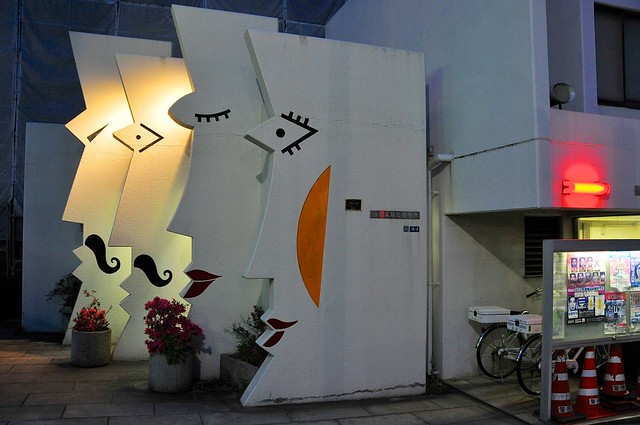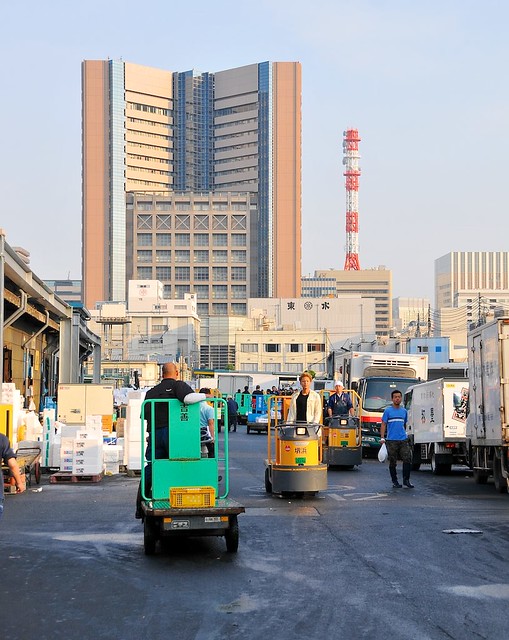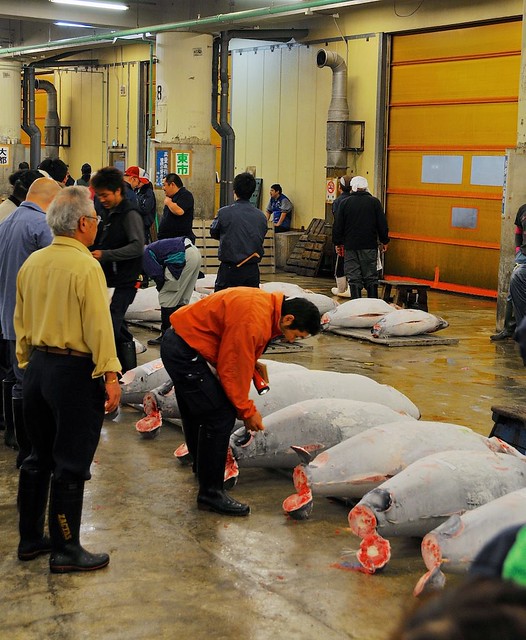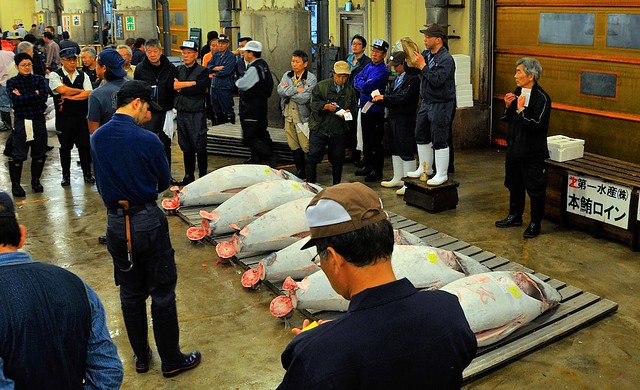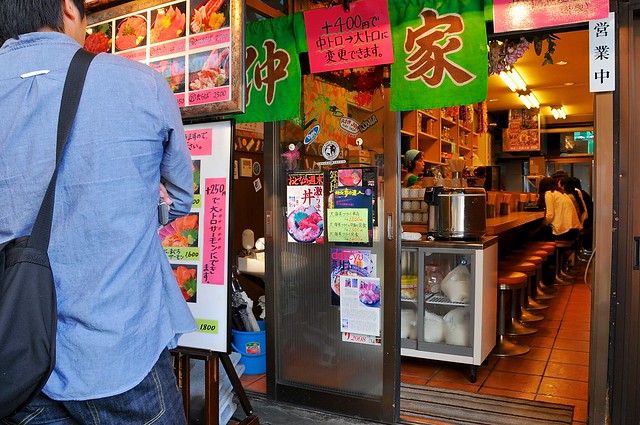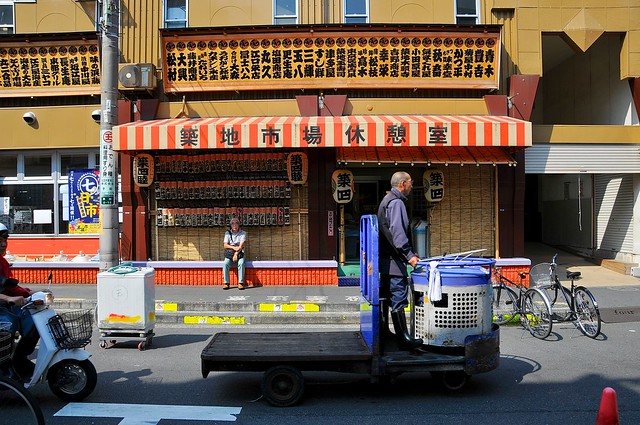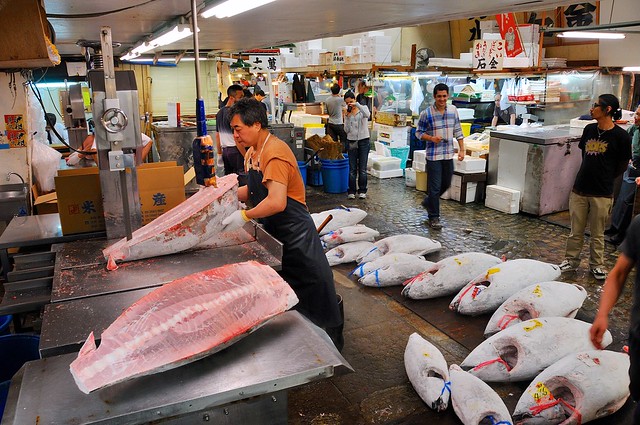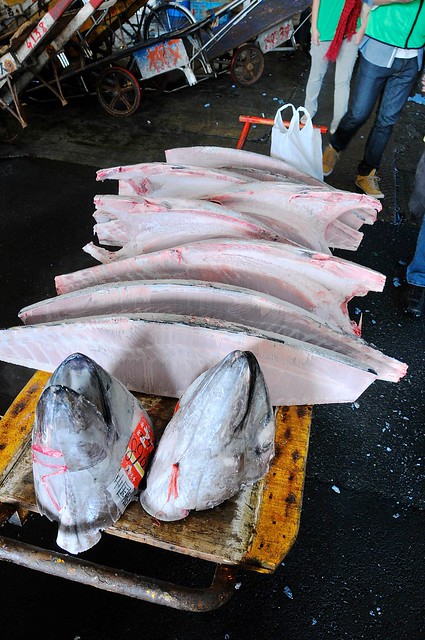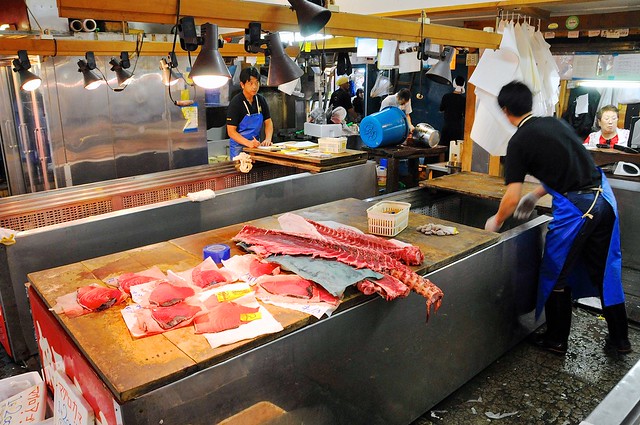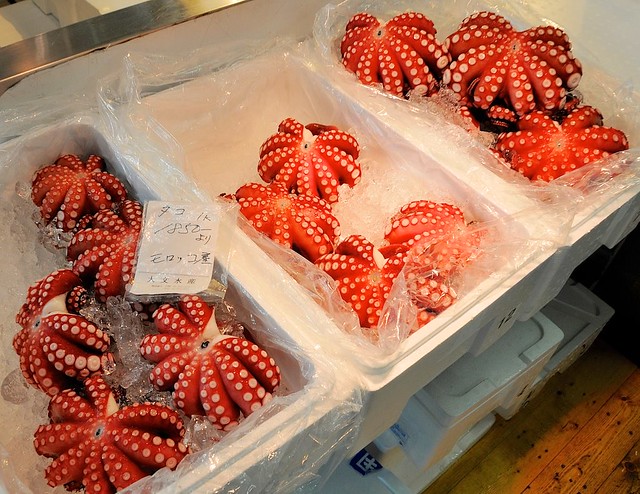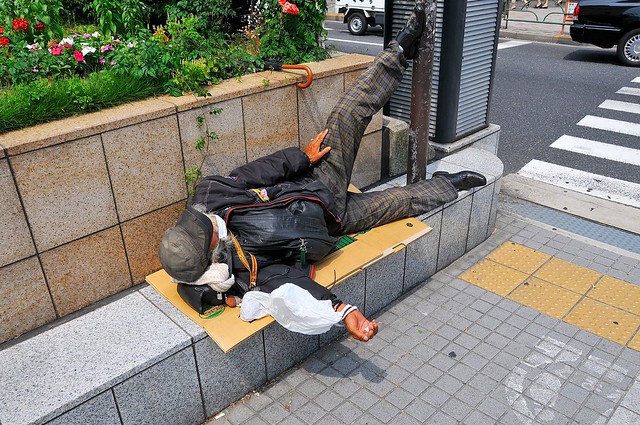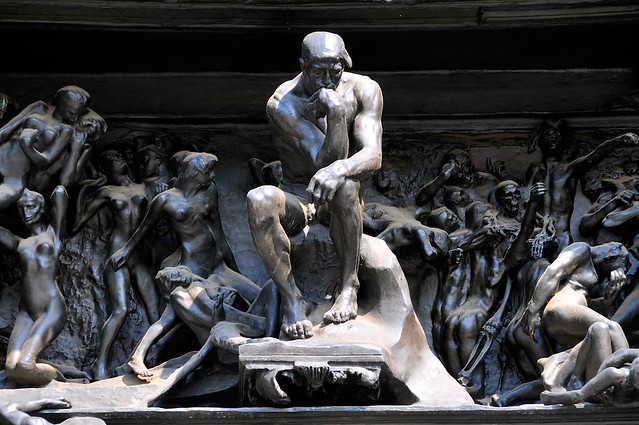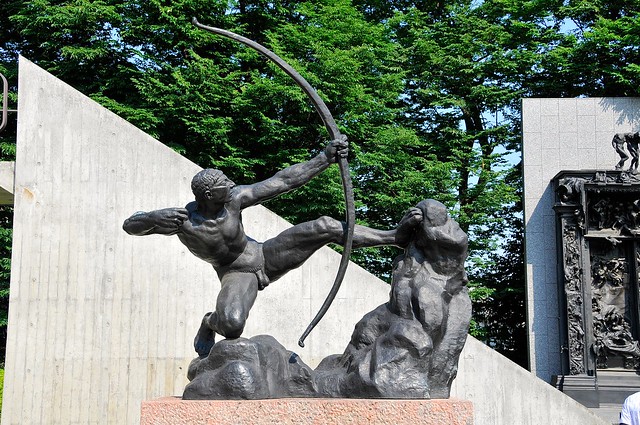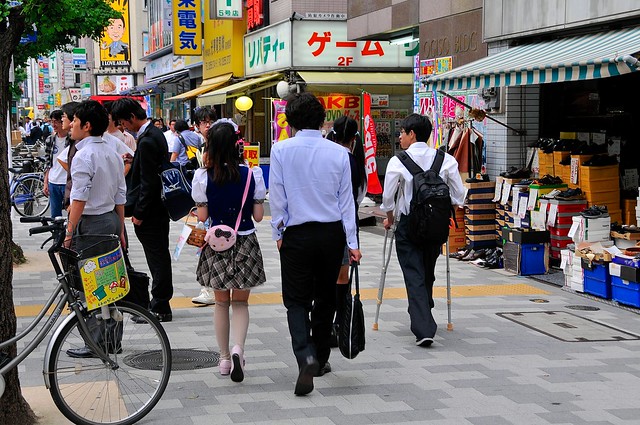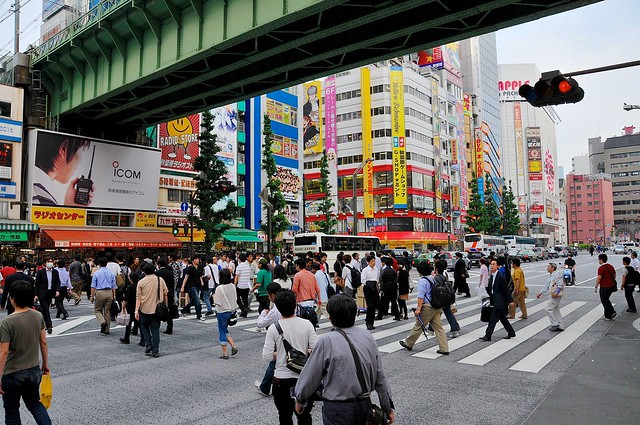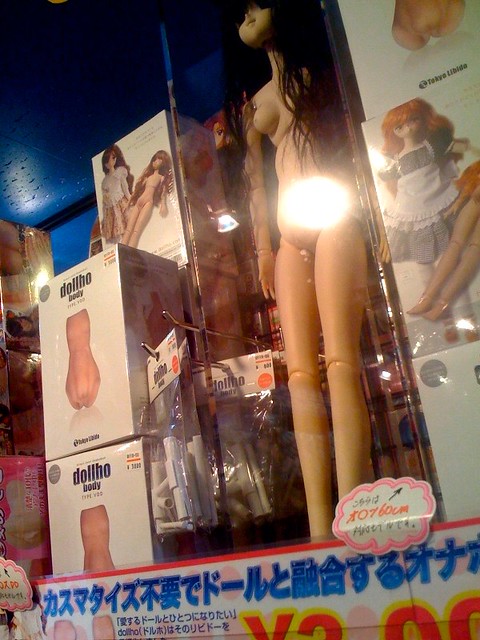I didn't make a seat reservation on the shinkansen to Shimonoseki: I simply showed up and sat in an unreserved car. The shinkansen is really expensive, but with the combination nikkan kyodo kippu ticket, the price was more reasonable. I also wanted to be able to compare the Shinkansen to the Korean (and possibly Chinese) fast trains. The train is fast and comfortable. In a flat and open environment the shinkansen would be OK for actually watching things go by, but in mountainous and cramped Japan, where there are few open vistas to enjoy, the sheer speed makes too much of the scenery a blur to properly enjoy. It's still a pleasurable experience —much better than flying, in my opinion—and like so much of Japan it's calm, quiet, and efficient.
The shinkansen doesn't actually stop in at Shimonoseki station. To get there, you have to either get off at the stop before (Shin-Shimonoseki, if coming from the north) or at the the stop after Shimonoseki (Kokura, which is actually in Kyushu), and then take the local train to Shimonoseki. From the station it's a short walk to the ferry terminal, on an elevated walkway. You will pass by a department store (there's always a department store next to a train station of any size), which is a good place to spend your remaining yen and pick up snacks (department stores always have supermarkets in their basements). But be sure to keep some yen to pay the port fee and fuel surcharge (the port fee is currently ¥610 per passenger, and the fuel surcharge is ¥1,200—when you buy your ticket you should clarify with your booking agent whether you'll have to pay the fuel surcharge when you check in), as they will only take cash. You could also check in first then go back to the department store to spend your remaining yen.
Ferries also run from Shimonoseki to Qingdao (close to Beijing) and Suzhou (close to Shanghai). If you have a Chinese visa and don't mind skipping Korea, these may be interesting options.
I was the first in my cabin, and was later joined by two Koreans. On the other side of the room, across the partition that divides it into two cabins, are three or four Japanese. I suspect that they segregate passengers based on nationality: Koreans in one cabin, Japanese in the other. As a foreigner, the Japanese staff in Shimonoseki put me in with the Koreans. I wonder if I would be put in with the Japanese had I been traveling in the other direction (actually, I suspect Korean staff would care less, and might not even segregate at all, as Japanese strike me as more insular).
I don't believe the two Koreans in knew each other before the trip. Nevertheless, they somehow decided that it would be a good idea to get up at 3:30 am and have a loud chat. I actually woke up from this, and even me sitting up and staring at them had no effect. I finally had to point at my (non-existant) watch and complain that it was three O'clock in order to convey my displeasure at their conversation. Weird.
The ferry was virtually empty. They had a restaurant, but I had managed to spend all of my yen before leaving Japan, and I had no won.Thankfully, I spent my last yen on food and drink.
The ferry has Japanese-style o-furo baths:large communal tubs of water, with spigots, stools, and hand-held showers surrounding it so you can clean yourself before getting into the pool to soak. I think I was the only one to use it. It was quite nice to soak in the bath and look out the window while the ship gently rocked.
If you wake up early enough, you'll find the ship laying in anchor outside of Busan harbour. The ferry must arrive in the middle of the night and then wait, allowing passengers to sleep, before entering the harbour and docking at a more sensible hour (about 8:00).
Customs and immigration at the port was quick and easy, and the port is in the middle of town. It was a 30 minute walk to my hostel, and maybe 5 minutes to Busan station, and about 2 minutes to the nearest subway station—the port is very conveniently located.
The shinkansen doesn't actually stop in at Shimonoseki station. To get there, you have to either get off at the stop before (Shin-Shimonoseki, if coming from the north) or at the the stop after Shimonoseki (Kokura, which is actually in Kyushu), and then take the local train to Shimonoseki. From the station it's a short walk to the ferry terminal, on an elevated walkway. You will pass by a department store (there's always a department store next to a train station of any size), which is a good place to spend your remaining yen and pick up snacks (department stores always have supermarkets in their basements). But be sure to keep some yen to pay the port fee and fuel surcharge (the port fee is currently ¥610 per passenger, and the fuel surcharge is ¥1,200—when you buy your ticket you should clarify with your booking agent whether you'll have to pay the fuel surcharge when you check in), as they will only take cash. You could also check in first then go back to the department store to spend your remaining yen.
 |
Map from Shimonseki station to port.
|
Ferries also run from Shimonoseki to Qingdao (close to Beijing) and Suzhou (close to Shanghai). If you have a Chinese visa and don't mind skipping Korea, these may be interesting options.
 |
Second-class cabin for men. The wall on the right separates this room from the other second-class cabin, and is open at the top. I believe there is only one female second-class cabin.
|
I was the first in my cabin, and was later joined by two Koreans. On the other side of the room, across the partition that divides it into two cabins, are three or four Japanese. I suspect that they segregate passengers based on nationality: Koreans in one cabin, Japanese in the other. As a foreigner, the Japanese staff in Shimonoseki put me in with the Koreans. I wonder if I would be put in with the Japanese had I been traveling in the other direction (actually, I suspect Korean staff would care less, and might not even segregate at all, as Japanese strike me as more insular).
I don't believe the two Koreans in knew each other before the trip. Nevertheless, they somehow decided that it would be a good idea to get up at 3:30 am and have a loud chat. I actually woke up from this, and even me sitting up and staring at them had no effect. I finally had to point at my (non-existant) watch and complain that it was three O'clock in order to convey my displeasure at their conversation. Weird.
 |
The Kaikyo Yume Tower, supposedly the tallest in Western Japan. I believe the word you're looking for is 'meh.'
|
The ferry was virtually empty. They had a restaurant, but I had managed to spend all of my yen before leaving Japan, and I had no won.Thankfully, I spent my last yen on food and drink.
The ferry has Japanese-style o-furo baths:large communal tubs of water, with spigots, stools, and hand-held showers surrounding it so you can clean yourself before getting into the pool to soak. I think I was the only one to use it. It was quite nice to soak in the bath and look out the window while the ship gently rocked.
The on-board bath.
|
If you wake up early enough, you'll find the ship laying in anchor outside of Busan harbour. The ferry must arrive in the middle of the night and then wait, allowing passengers to sleep, before entering the harbour and docking at a more sensible hour (about 8:00).
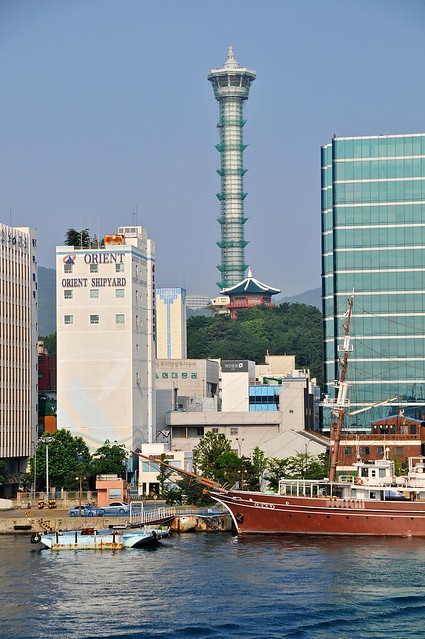 |
| Busan Tower looks more like bamboo than the Taipei 101 does. |
Customs and immigration at the port was quick and easy, and the port is in the middle of town. It was a 30 minute walk to my hostel, and maybe 5 minutes to Busan station, and about 2 minutes to the nearest subway station—the port is very conveniently located.
